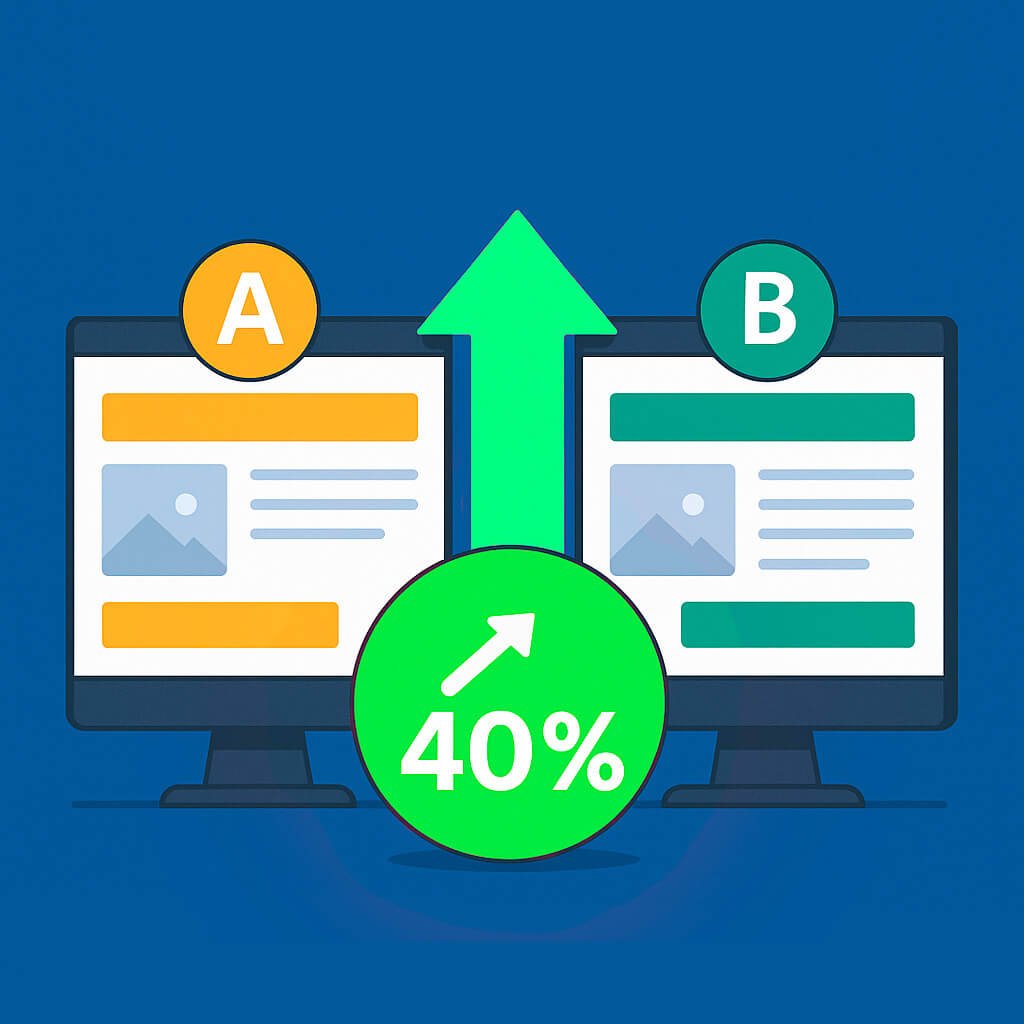Discover the strategies we use to increase our clients’ conversion rates through systematic testing.
If you want your website to perform better, guessing is not an option. The difference between a page that converts and one that repels visitors often lies in small details — headlines, buttons, images, or even color schemes.
A/B Testing, also known as split testing, is one of the most effective ways to optimize your website and increase your sales without increasing your traffic.
What is A/B Testing?
A/B Testing consists of creating two versions of the same page (Version A and Version B), with a single variation between them — for example, the call-to-action button color or the headline. Visitors are randomly divided between the two versions, and data reveals which performs better.
Why A/B Testing Increases Conversions
At GK Online Services, we’ve seen conversion rates grow by up to 40% after implementing systematic A/B Testing. Here’s why:
- You make decisions based on real data, not opinions
- You discover what actually motivates your visitors to take action
- You reduce bounce rates and improve user experience
- You constantly optimize without affecting your current performance
What Can You Test?
There are dozens of elements that influence conversion. The most common A/B tests include:
- Headlines and subheadings
- Call-to-action (CTA) buttons — color, size, text
- Product images or hero banners
- Form length and fields
- Pricing displays or offers
- Testimonials and social proof
Case Study: 40% Conversion Increase
A client of GK Online Service had a landing page for lead capture with a 12% conversion rate. Through systematic A/B Testing of CTA text and form design, we increased the conversion to 16.8%, a 40% growth — without increasing traffic.
Conclusion
A/B Testing is not magic — it’s science applied to your website. If you want to scale your results with precision, start testing, analyzing, and optimizing today.
Want help implementing A/B Testing on your website?
Talk to Rock Solutions and discover how to turn visitors into customers systematically.

